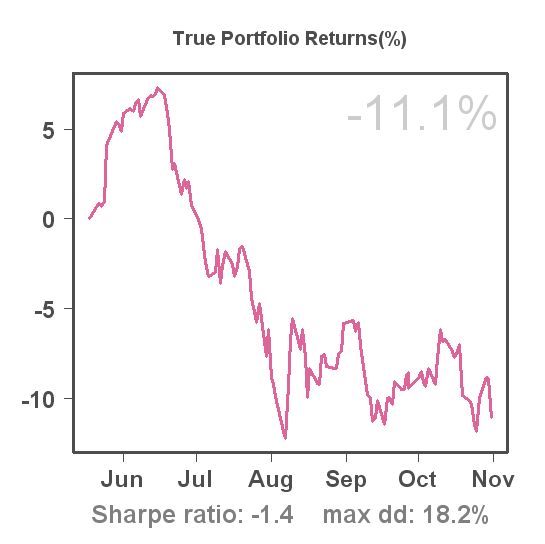I've noticed a lot of people have visited my blog over the past weeks. As the number of posts grows, it might be harder for new visitors to get a good understanding of what I'm up to. Therefore I'm going to summarize my strategy every once in a while, so everyone can keep a good oversight. So here it goes:
1. All trades are based on signals from 3rd party vendors
There's a large amount of signal services, newsletters and black box trading systems available and my task is to pick the best ones. I believe 99% is probably not worth trading; I'm going after the remaining 1%. For now, I limit myself to systems offered through Collective2 (I'm not a vendor myself) because the track record is verified independently. I do a lot of research that should help to pick the best systems in terms of reward and risk.
2. Multiple systems are traded simultaneously to spread risk
I use portfolio optimization tools to construct a portfolio of systems (similar to the way one would construct a portfolio of stocks), using the historical returns for each of the systems. Typically only the entries and exits of the trades are available, but not the historical returns. Therefore I have written my own software that allows me to reconstruct the system's equity curve from the entries and exits posted for the individual trades. The idea is that if systems are uncorrelated, it is unlikely that they are all in drawdown at the same time (besides drawdowns resulting from a decline of the broader market, see next point). Thus, the drawdowns of the portfolio are expected to be smaller than the drawdowns of the individual systems, resulting in a smoother equity curve.
3. The entire portfolio is hedged
It is hedged against a possible large decline in the broader market. Even though systems might be fairly uncorrelated with each other, there is still the fact that they correlate to some extent with the broader market. This is especially the case when many systems are trading long-only positions in stocks or index futures. To hedge against a sudden sell-off or longer-term bear market I am holding a set of put options (e.g. SPY, DIA or QQQQ) in addition to the positions generated by the systems.
4. If possible, I try to search for improvements in the systems
This is a new area, and I've started my first attempts fairly recently. The idea is to make slight modifications to the signals in terms of timing or volume if that would lead to higher expected returns or lower expected risk.
Miscellaneous:
- The systems I subscribe to are listed (with links) on the right hand side of this blog, directly underneath the P/L graph. Check them out, you will find a lot of additional information on these systems by following the links. Again, I am not the developer/vendor of these systems, but a subscriber.
- Some systems require "auto trading", which means that a program called "TradeBullet" runs on my PC, gets the signals from the Collective2 server and translates them into orders submitted by api to TWS (Interactive Brokers); other systems can be traded manually, as they typically generate orders before the market opens and timing is less critical. I make a big effort to replicate the signals as close as possible in my account.
- Please read the disclaimer at the bottom of this blog

